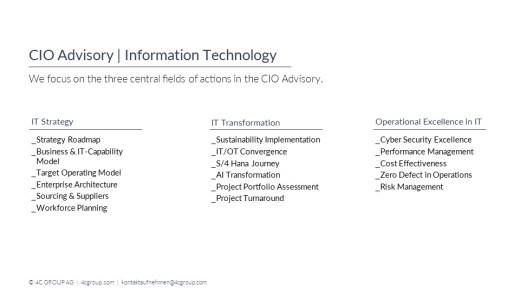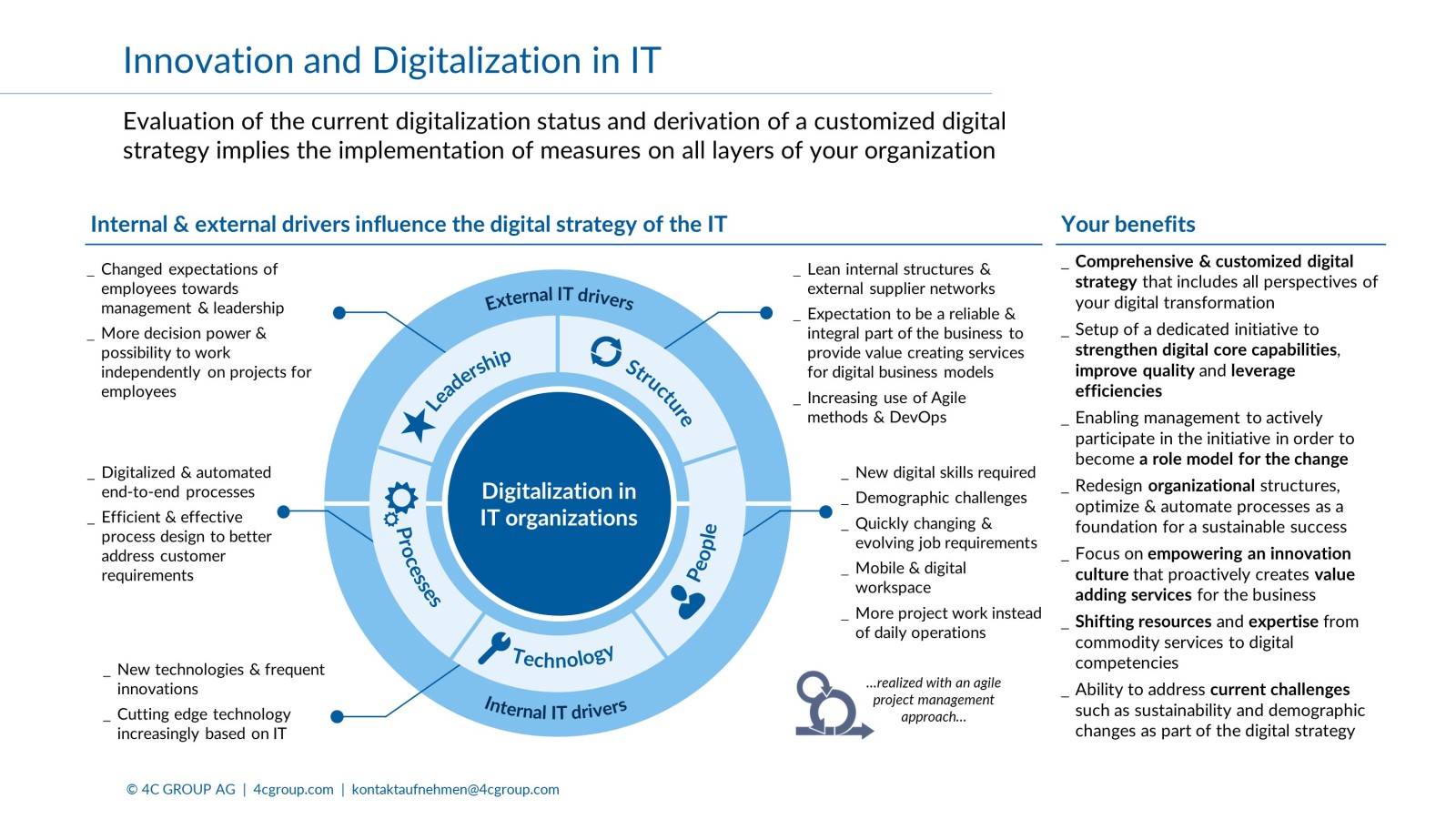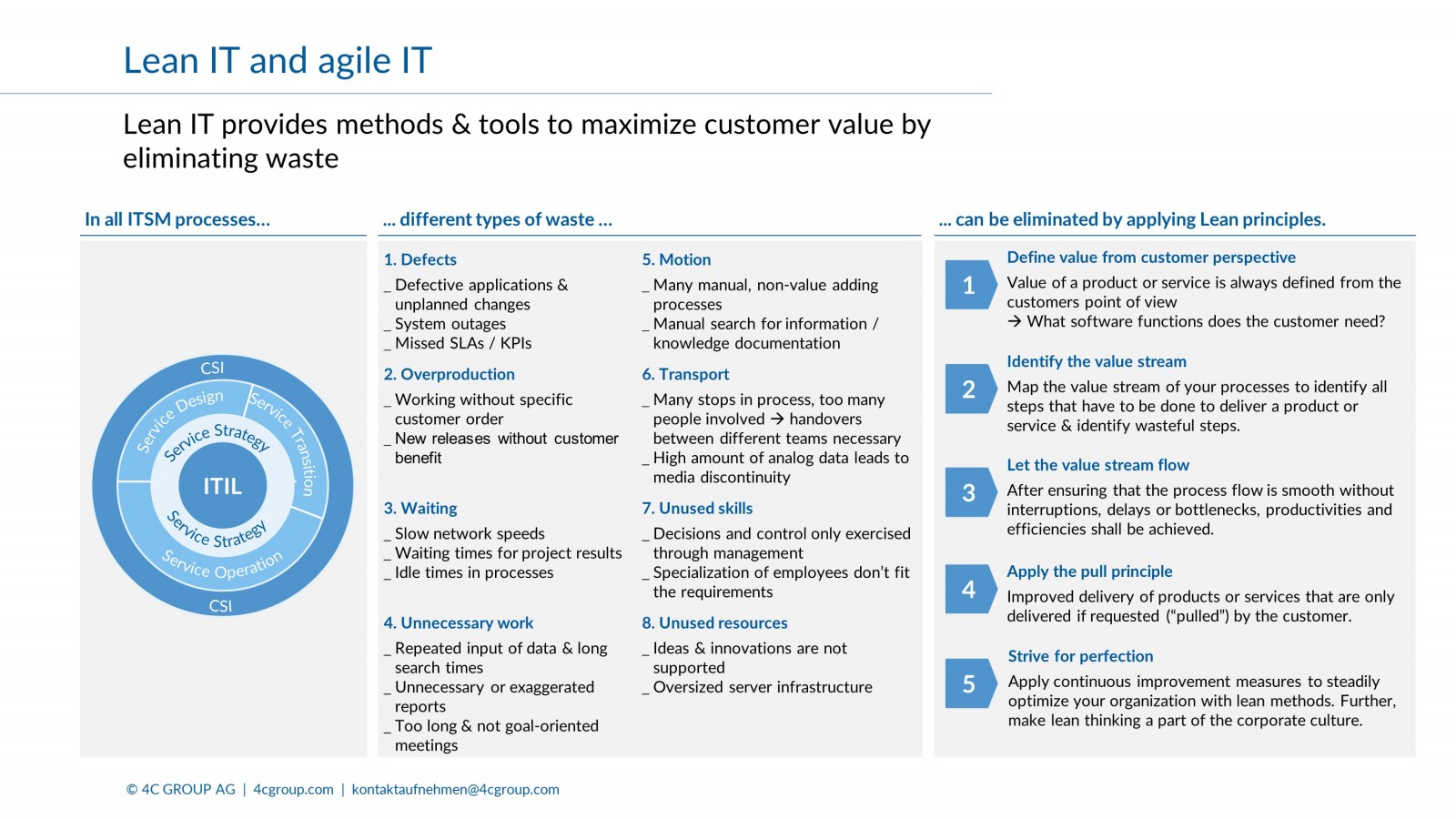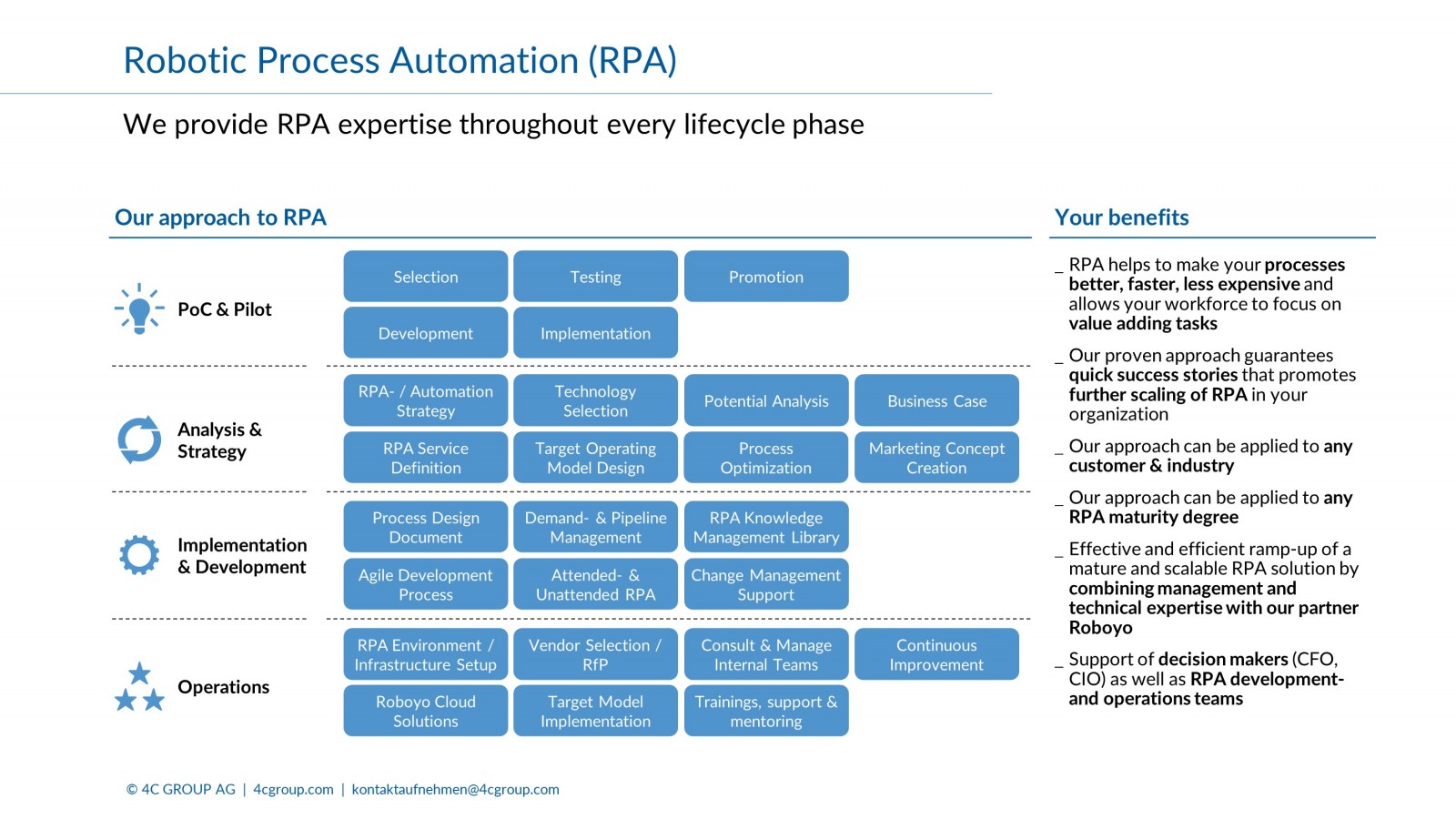How digitization will affect your IT organization
Digitization will significantly change IT organizations. In addition to the existing values of stability, reliability and performance of the services provided, the greatest challenges for IT in the context of digitization are, in particular, the increased requirements in terms of speed, flexibility and scalability of services. These requirements are not substitutes, but complements. IT organizations must change and accept this challenge. Cultural and organizational factors, as well as changes in leadership, play less of a role here than technical ones. That is why the type of collaboration between IT and business must be questioned particularly. Instead of merely providing defined IT services, IT must become a strong and agile innovation partner with its own business model and concrete value proposition. This requires a comprehensive digitization strategy for IT, starting with the organization and management and extending to employees and processes.
Digital Transformation Journey
Digitalization continues to be one of the top topics in companies. The role of the IT organization has and will continue to change significantly. Cultural and organizational challenges must be mastered for a successful and sustainable transformation. The prerequisites for this are a high level of stamina, unconditional top management support, and a clear and holistic approach. Depending on the business model and IT setup, this differs greatly in the specific use case. We support you in your personal "Digital Transformation Journey" from the conception phase to implementation in the transformation areas of Leadership, Sourcing, Business-IT Interface, Processes & Organization, Technology, Change Management, Employees & Skills and Finance & Budget.
Lean IT
Due to the increasing penetration of digitalization in all industries, product life cycles are continuing to shorten. In addition, customers are becoming more demanding with regard to new products and services. For IT organizations, the challenge is to provide innovative and high-quality services under time and price pressure. Lean IT and Agile IT are two established approaches that support these challenges. Lean IT provides approaches and methods to avoid waste. Wastes in IT are, for example, unnecessary setup times triggered by frequent task switching in software development or additional effort due to the elimination of defects. Lean IT is based on the principle of continuous improvement in workflows and processes. If thought through to the end and implemented consistently, time and costs can be reduced sustainably. The use of agile methods, on the other hand, enables a rapid response to changing requirements. Through iterative development approaches and short plannable (development) intervals (sprints), customer wishes and customer feedback can be actively integrated into the development of new solutions and short time-to-market times can be realized. We support you in identifying the right approaches and methods for your individual goals and in establishing them in your IT organization.
Hyper Automation Strategy
Hyper Automation's main goal is the end-to-end automation of business processes. To achieve this, various technologies for process analysis, selection and automation are used and combined with each other. The trick is to coordinate these efficiently in order to achieve the greatest possible benefit. The foundation for consistently embedding Hyper Automation in a company is professional management and an overall Hyper Automation strategy. Measures for setting up and anchoring the organizational processes in IT are derived from the strategic goal. In addition, decision-making frameworks for the selection of pilot projects and technologies can be created on the basis of a Hyper Automation strategy. Possible technologies include process mining or robotic process automation (RPA). RPA in particular plays a central role in the actual automation of manual tasks. In addition to the automation of simple processes, significantly more complex processes can also be automated with the inclusion of machine learning.
IT driven Business Innovation
As an IT organization, the most important task is to optimally support the business in its activities. In the past, this meant providing IT services such as mail servers, networks or end devices with as little downtime as possible. Today, these IT services are commodities and a basic requirement for normal operations. IT innovations must therefore not be reduced to new software versions or process improvements. IT services that have a significant impact on the business' ability to compete and differentiate deserve special focus in every IT organization. To do this, IT needs to understand the business, know its core competencies and identify appropriate IT control levers. The creation of a business capability map provides a structured overview of the core competencies of the business and allows you to identify your core IT services and develop them in a targeted manner. In this way, you can sustainably increase the business result.
An overview of current top topics
Our experts for IT Innovation & Transformation
Get in touch with us through Xing or LinkedIn















